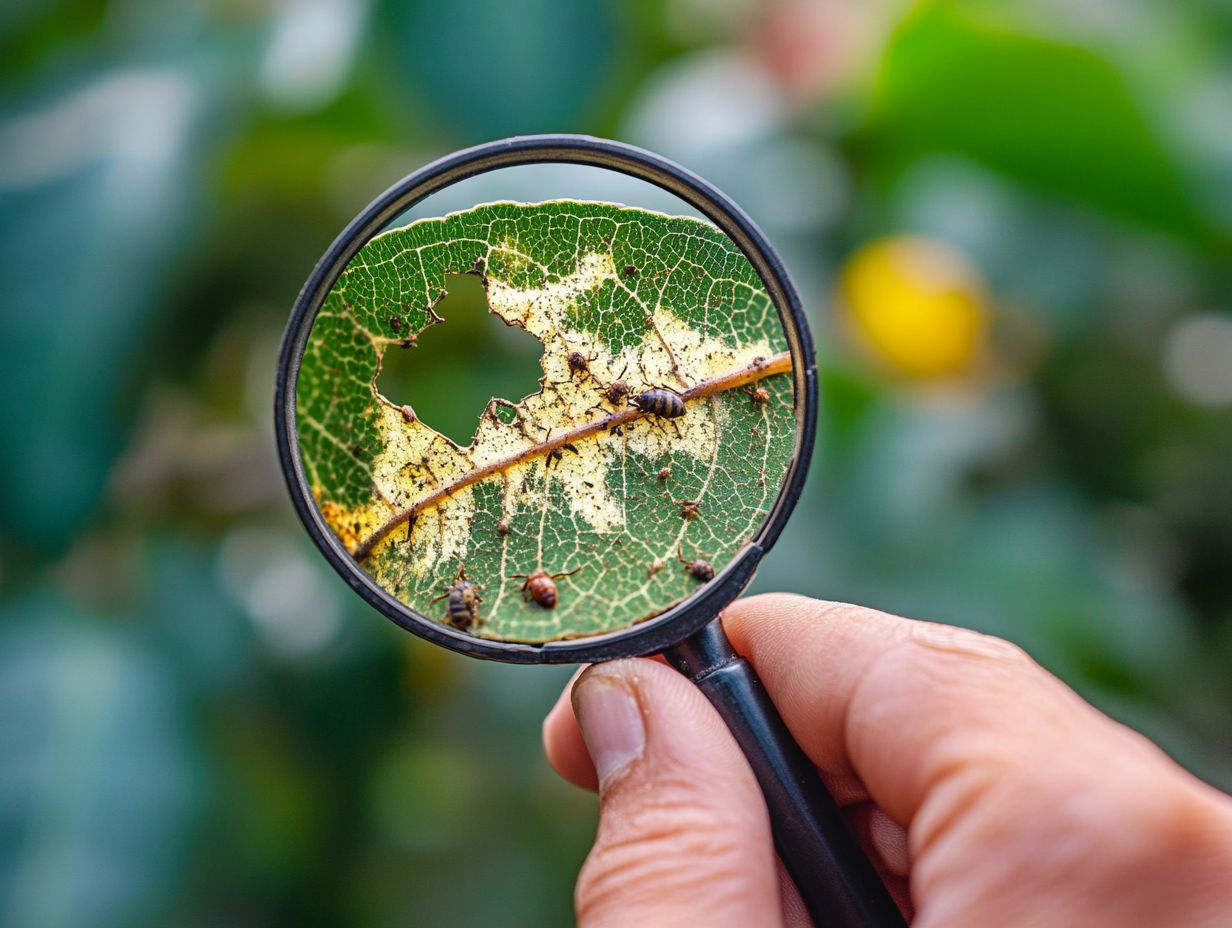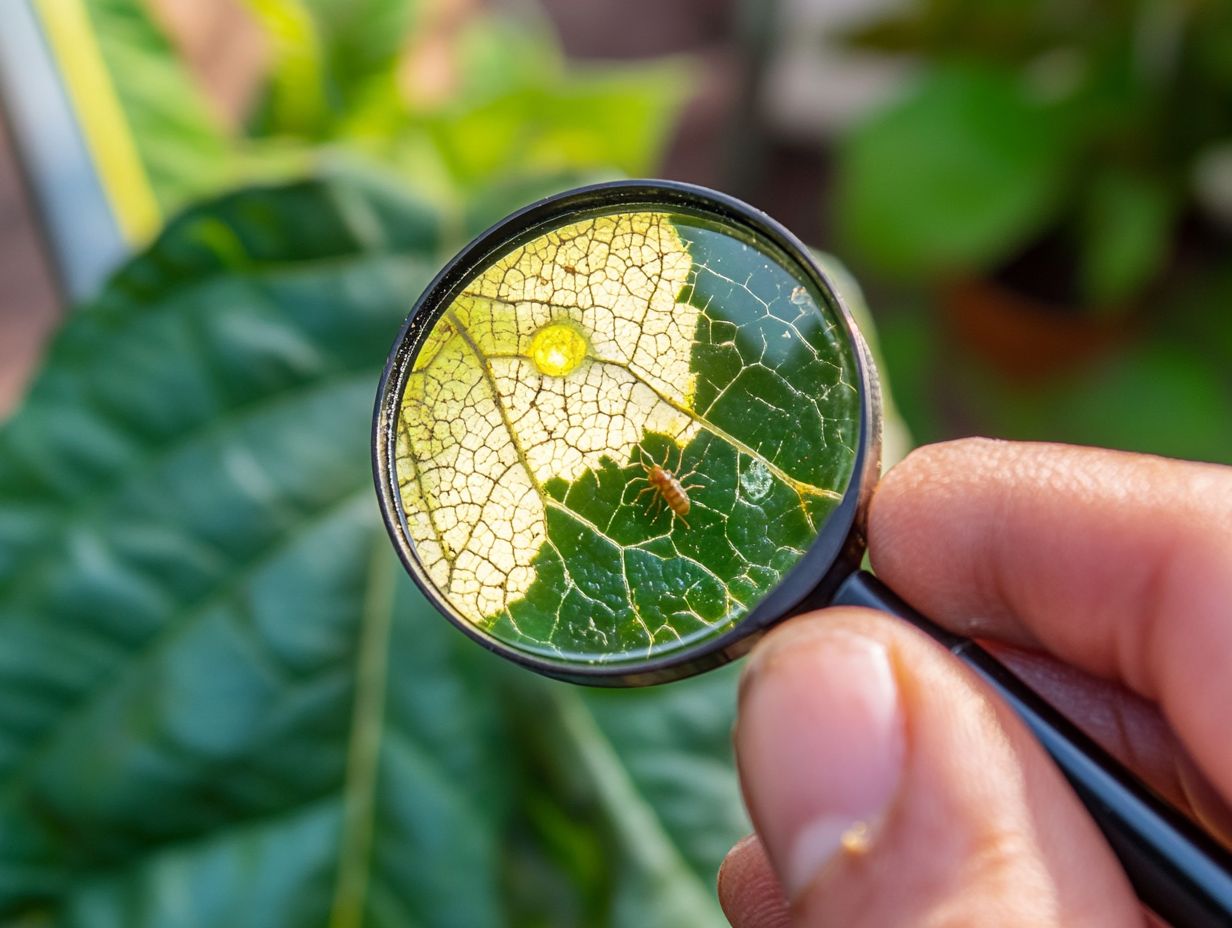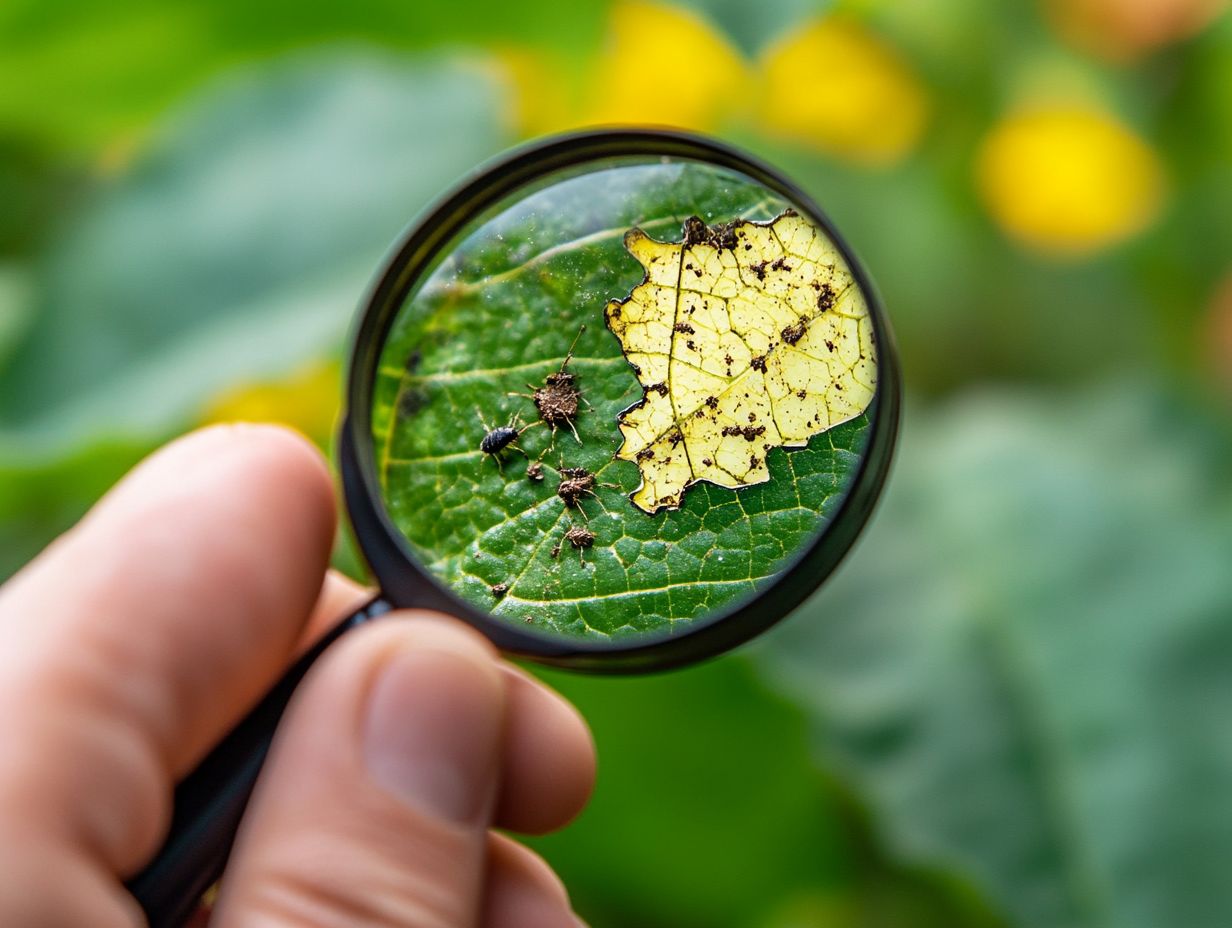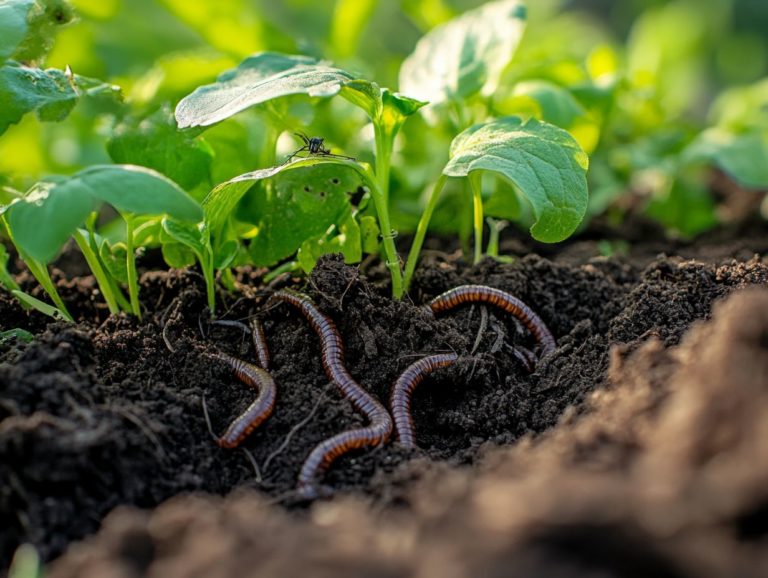How to Recognize and Treat Pest Damage
Pest damage can truly disrupt the tranquility of your home, leaving behind not only unsightly marks but also potential safety concerns.
By learning to identify the early signs of pest problems, you can save yourself from expensive repairs in the future.
This article delves into the common indicators of pest damage, the signs of pests, the various types of pests you may encounter, and effective strategies for prevention.
It also covers methods for addressing existing damage and long-term solutions to keep those hidden pests at bay.
Act now to safeguard your home from pests!
Contents
- Key Takeaways:
- Identifying Pest Damage
- Types of Pests and Their Damage
- Preventing Pest Damage
- Treating Pest Damage
- Dealing with Recurring Pest Issues
- Frequently Asked Questions
- What are some common signs of pest damage?
- How can I differentiate between different types of pest damage?
- What should I do if I suspect pest damage in my home or garden?
- Can I treat pest damage on my own, or should I hire a professional?
- How can I prevent pest damage in the future?
- Are there any natural or eco-friendly ways to treat pest damage?
Key Takeaways:

- Be on the lookout for common signs of pest damage such as gnaw marks, droppings, and holes in food packaging.
- Different types of pests can cause different types of damage, so it’s important to identify the pest before treating the damage.
- Prevent pest damage by keeping a clean and organized home, sealing off pest entry points, and using natural deterrents.
Identifying Pest Damage
Identifying pest damage is essential for preserving the integrity of your home and preventing long-term structural damage.
Pest infestations can cause a range of issues, including wood damage, compromised insulation, and health risks arising from exposure to harmful pests.
By understanding the signs of pest activity and employing effective pest monitoring techniques, you equip yourself for timely intervention and control efforts.
This process entails a meticulous inspection of common pest entry points and a keen recognition of specific identifying damage, ensuring that your pest management strategy is both proactive and effective.
Common Signs and Symptoms
Common signs and symptoms of pest damage can manifest in various ways, such as droppings, gnaw marks, or unusual noises from rodents each hinting at a different type of infestation, from rodents to wood-boring pests.
These indicators not only suggest the presence of pests but may also signal potential health problems. For instance, rodents leave behind droppings and urine that can carry diseases like a virus that can make you very sick or salmonella, posing significant threats to your well-being. Similarly, insects like cockroaches shed their skin and produce allergens that can trigger asthma and allergic reactions.
Then there are wood-destroying organisms, such as termites, which can inflict structural damage that compromises the safety of your home.
You must identify these early warning signs! Keep an eye out for hollow-sounding wood, frass, or shed wings each could signal a hidden infestation that demands your immediate attention.
Types of Pests and Their Damage
Understanding the various types of pests and the specific damage they can inflict is crucial for implementing effective pest management and prevention strategies.
Common culprits like termites, carpenter ants, and woodpeckers can wreak havoc on your wooden structures, while rodents such as mice and rats may pose serious risks, leading to electrical damage and potential health issues from pathogen exposure.
Moisture damage can also invite pests like carpenter bees and woodpeckers, compounding the problem if not addressed promptly.
In summary, being vigilant about pest damage is crucial. Act on early signs, understand the types of pests, and employ prevention strategies to protect your home.
Insects, Rodents, and Other Pests

Insects, rodents, and other pests can wreak havoc on your home. Termites and carpenter ants are particularly infamous for their ability to inflict serious wood damage.
Rodents can lead to issues that compromise insulation and electrical wiring. Identifying these pests early is essential for effective management and prevention.
For instance, termites tend to leave behind mud tubes and discarded wings. Carpenter ants create visible sawdust trails, which is the dust that ants leave behind when they chew wood, along with signs of pest damage.
Rodents, on the other hand, often announce their presence with droppings and gnaw marks clear signs that demand your attention.
It s crucial to customize your pest control strategies to address the unique behaviors and habitats of each type of pest. By utilizing targeted treatments, such as bait stations for ants and specialized traps for rodents, you can significantly reduce the potential damage and disruptions these unwelcome intruders may cause.
Preventing Pest Damage
Preventing pest damage is essential for maintaining a safe and healthy environment against infestations. This requires a blend of effective strategies and an understanding of common pest entry points.
By engaging pest control professionals, you gain expert insights into pest prevention techniques. They can help identify potential risks that could lead to infestations.
Implementing these preventative measures not only tackles current pest issues but also offers you long-term pest resistance against future damage.
Effective Strategies and Techniques
Effective strategies and techniques for pest prevention are crucial for minimizing risks. This ensures long-term pest management in your home or business.
Focus on key aspects like moisture control and pest resistance to create a robust defense. By implementing regular pest monitoring, you can stay ahead of potential pest infestations.
This proactive approach allows for early detection of unusual signs of pests, such as dropped materials or damaged materials. Understanding the habits and preferred environments of various pests will enhance your efforts.
Maintaining proper moisture levels is essential, as pests are often drawn to damp areas. Taking steps to reduce humidity and address leaks can significantly impact pest attraction.
Incorporating these pest management principles creates a less inviting environment for pests. This also contributes to a healthier living or working space for you and those around you.
Treating Pest Damage
Addressing pest damage effectively demands a thorough approach. This often necessitates the expertise of pest management experts.
They can suggest targeted treatments specifically designed for the type of infestation and the severity of the damage. Act quickly to repair any damage caused by pests for a safer home!
It s essential to repair harm inflicted by pests like termites, carpenter ants, or rodents not only to restore structural integrity but also to deter future infestations.
By acting early, you can significantly mitigate the effects of pest damage and cultivate a healthier living environment that is pest-free.
Methods for Eliminating Pests and Repairing Damage

Methods for eliminating pests and repairing any damage can vary significantly based on the specific type of pest and the extent of the pest damage you re dealing with. Pest management specialists often adopt a multi-faceted approach that blends preventative measures with corrective actions.
This comprehensive strategy typically begins with identifying the pests in question whether it’s termites, rodents, or bedbugs. Once you’ve pinpointed the culprit, a combination of pest-specific treatments, such as baits and sprays, along with non-chemical alternatives like traps and organic solutions, may be employed.
But it s not just about getting rid of those unwelcome guests; addressing insulation damage and other structural issues caused by pests is equally important. Overlooking these problems can lead to more serious complications, including the strength and stability of your home and skyrocketing energy costs.
Therefore, it s essential to focus not only on immediate pest control but also on long-term pest prevention through regular inspections and repairs.
Dealing with Recurring Pest Issues
Navigating recurring pest issues can be quite the challenge, necessitating a strategic approach that focuses on ongoing pest maintenance and the implementation of long-term pest solutions tailored to your unique pest concerns.
Partnering with pest management specialists proves invaluable, as they help you uncover the reasons why pests are coming back and craft targeted strategies to prevent future occurrences.
Long-Term Solutions and Maintenance Tips
Want to keep pests out for good? Long-term solutions and maintenance tips are your best allies for effective pest prevention. It s vital to prioritize regular pest monitoring and develop a keen understanding of the environmental factors that attract these pests.
To truly safeguard your surroundings, incorporating ongoing pest inspections into your routine is vital. By systematically assessing areas where pests might thrive, you can identify potential threats before they escalate into larger pest issues.
Controlling moisture levels is key, as many pests are particularly drawn to damp conditions. By understanding common pest habits like nesting and feeding patterns you can implement targeted strategies that effectively deter pest infestations.
Integrating these pest prevention techniques with your routine maintenance will ensure that your space remains less inviting to unwanted visitors, creating a healthier, pest-free environment that eliminates pest attraction.
Frequently Asked Questions
What are some common signs of pest damage?

Some common signs of pest damage include chewed or damaged plants, droppings, holes in wood or walls, and unusual noises, which are crucial for identifying pests.
How can I differentiate between different types of pest damage?
Different types of pests can cause different types of damage. For example, termites leave behind sawdust-like droppings, while rodents often leave noticeable teeth marks. This includes wood damage from carpenter ants and structural damage from infestations.
What should I do if I suspect pest damage in my home or garden?
The first step is to thoroughly inspect the area and look for any signs of pests. If you confirm the presence of pests, such as rodents or wood-boring pests, it’s important to take swift action to prevent further damage, particularly electrical damage and moisture damage.
Can I treat pest damage on my own, or should I hire a professional?
It depends on the severity of the damage and the type of pest. In some cases, DIY methods may be effective, but for more serious infestations or pest problems, it’s best to consult a professional pest control service like EcoCare or Plunkett s Pest Control.
How can I prevent pest damage in the future?
The best way to prevent pest damage is to regularly inspect and maintain your home and garden, focusing on pest entry points and pest attraction. This includes sealing any cracks or openings, keeping food sources properly stored, and removing any standing water.
If you notice any signs of pest damage, act quickly! Protect your home today schedule a pest inspection!
Are there any natural or eco-friendly ways to treat pest damage?
Yes! There are several natural and eco-friendly methods to treat and prevent pest damage. These methods include using essential oils, diatomaceous earth, and natural repellents like peppermint and citronella.
These approaches can be a part of a broader pest management plan. Keep in mind, though, that they may not work as well for severe infestations.






